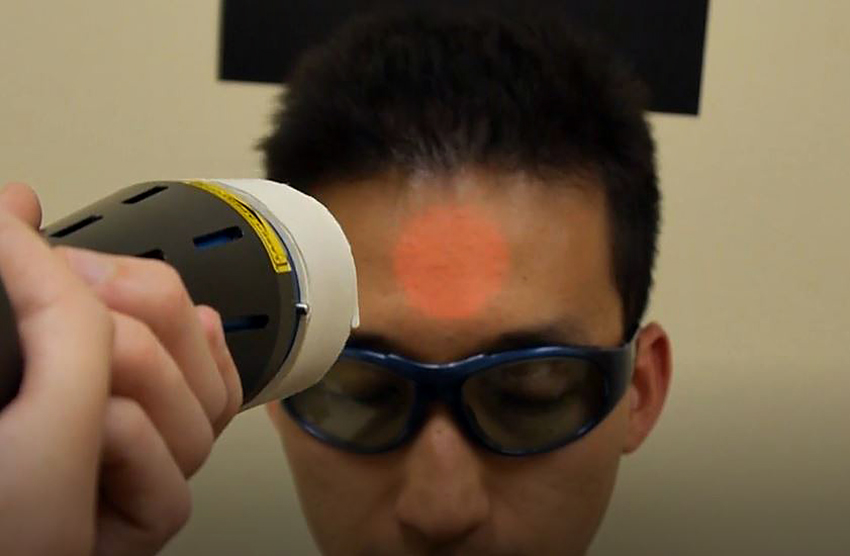Seeing a therapist for anxiety may soon include seeing a laser as well. Eric Zaizar, graduate student in clinical psychology, and Michael Telch, psychology professor and principal investigator of the project, are currently studying whether a non-invasive laser could increase the efficiency and reduce the relapse rate of exposure therapy, the leading treatment for anxiety. The laser works by shooting painless infrared energy, directed by a red light, at a person’s brain to speed up reactions involved in memory storage.
Telch says exposure therapy, which gradually exposes the patient to their fears, is already highly successful, but the potential of this laser lies in its convenience.
The laser could also be the successor to the drug methylene blue, which gets its name from turning urine blue, can potentially help treat anxiety but can’t be taken with antidepressants, Telch added. While the relatively new study hasn’t produced any concrete results yet, Zaizar said there’s a wealth of literature backing the laser’s effects on chronic pain in humans and mental health in animals.
Zaizar said the tool is a thick, semi-cylindrical device aimed at the forehead. Although the light emitted is invisible since it’s infrared, patients will feel some warmth. The duration of the laser treatment is eight minutes, but the important part is when the laser is applied after the therapy session, Zaizar said.
“There’s a window of time right after the exposure therapy when the brain has become very active trying to store this memory,” Zaizar said. “We want to apply the laser during this window to optimize the chances of helping store that.”
The laser aims for a specific region of the brain called the ventromedial prefrontal cortex, Telch said. Zaizar said this is where they hope the light will provide additional “fuel” for boosting memory storage of the exposure. However, Telch said, though the laser’s target is the same for all participants, the exposure itself is different depending on which type of anxiety the patient comes in for.
“We’re taking this (laser) treatment across four different fear domains. These are claustrophobia, social anxiety, contamination fear and anxiety sensitivity, which is when people show exaggerated fear responses to feelings of stress or anxiety,” Telch said.
Beyond the therapy method and types of anxiety set by the study, Zaizar said this treatment could be expanded to psychotherapy and other anxiety disorders if the laser proves beneficial.
Clinician Jolene Jacquart, who works in UT’s Anxiety and Stress Clinic, said the potential scope of the device is exciting, although there is more to implementing this tool clinically even if it’s shown to be successful in trials.
“Despite the science behind the laser indicating its safety, the thought of having someone shine a laser at your head can be scary,” said Jacquart, a clinical pyschology graduate student. “Some people are going to be less willing than others to augment their treatment with the laser method. It also comes down to efficiency … would it significantly reduce the number of sessions? Adopting regular use of the laser would need to be cost-efficient and session-efficient for patients.”
But despite these concerns, Jacquart said she is optimistic about using the technology to help beam away anxiety.
“I think it’s really interesting,” Jacquart said. “Anything we can do to make mental health treatment more effective, efficient and available is important and worth exploring.”















